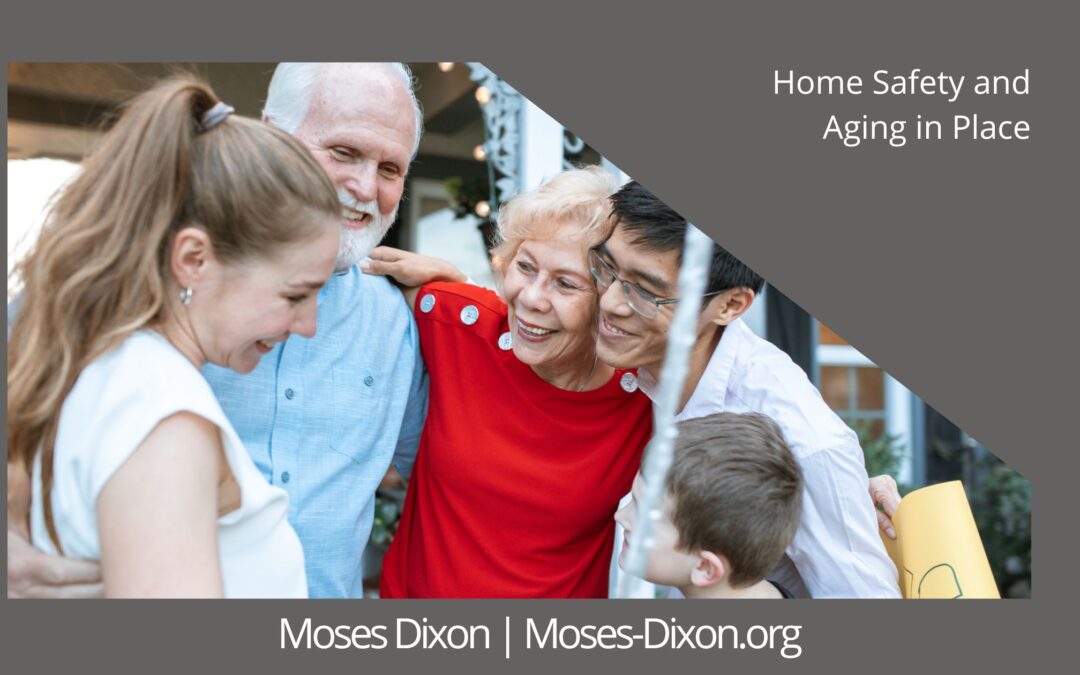Aging is a natural part of life, and many older adults strongly desire to remain in their homes as they age. This concept, “aging in place,” is becoming increasingly popular as it allows seniors to maintain independence and stay in familiar surroundings. However, ensuring older adults’ safety at home is paramount.
The Benefits of Aging in Place
Aging in place offers numerous advantages for seniors, including:
- Familiarity and Comfort: Home is where cherished memories are made, and staying in one’s home can provide comfort and familiarity.
- Independence: Seniors who age in place can continue making decisions and maintaining their daily routines.
- Community and Social Connections: Staying at home often means being close to friends, family, and neighbors, which can help combat feelings of isolation.
- Cost-Effective: In many cases, aging in place can be more cost-effective than moving into an assisted living facility.
While aging in place is desirable for many older adults, ensuring the home is a safe environment is essential. Let’s explore some key elements of home safety.
Home Safety Modifications
- Bathroom Safety: Bathrooms are a common source of accidents for seniors. Installing grab bars near the toilet and in the shower, using non-slip bath mats, and adjusting the water heater to a lower temperature can prevent falls and burns.
- Accessible Entryways: Ensure that entryways are wheelchair or walker-friendly, with ramps or handrails if necessary. A no-step entrance is ideal for seniors with mobility challenges.
- Well-Lit Spaces: Adequate lighting is crucial to prevent trips and falls. Install motion-sensor lighting in hallways and ensure that all rooms have good visibility.
- Kitchen Modifications: Lowering countertop heights, providing easy-to-reach storage, and installing lever-style faucet handles can make the kitchen more accessible.
- Bedroom Safety: Ensure the bedroom is easily navigable. Consider adjustable beds, bed rails, and nightstands with ample lighting.
- Stair Safety: If the home has stairs, consider installing stairs or chair lifts to make multi-story living safer.
- Medication Management: Organize medications in pill dispensers and set reminders for taking them. Consider enlisting the help of a home healthcare professional for medication management.
- Emergency Response System: Install an emergency response system that allows the senior to call for help in case of a fall or other emergencies.
Regular Safety Assessments
Regular safety assessments are essential to identify potential hazards and address them promptly. These assessments can be conducted by family members, healthcare professionals, or home safety experts. Regular evaluations should include a review of the following:
- Fall Risks: Identify tripping hazards such as loose rugs, cluttered walkways, or uneven flooring.
- Fire Safety: Ensure that smoke detectors are working and fire extinguishers are readily available. Create a fire escape plan.
- Temperature Control: Maintain a comfortable room temperature and check that heating and cooling systems are functioning correctly.
- Home Security: Evaluate home security measures to protect against break-ins.
- Social and Emotional Well-Being: Assess the senior’s mental and emotional health. Loneliness and depression can be as harmful as physical hazards.
Support Systems
Aging in place often requires a support system, including family members, friends, and community services. Some ways to establish a support system include:
- Regular Check-Ins: Have family or friends check in on the senior regularly to ensure their well-being.
- Home Health Care: Consider hiring a home health aide or nurse to provide medical care and assistance with daily activities.
- Community Resources: Many communities offer transportation, meal delivery, and social programs for seniors.
- Legal and Financial Planning: Work with an attorney to establish power of attorney, advance directives, and a financial plan to meet the senior’s needs.
Conclusion
Aging in place can provide seniors with a sense of dignity and independence. However, it’s crucial to prioritize home safety to make this option viable and comfortable. Regular safety assessments, home modifications, and a robust support system are essential to successful aging in place. With the right precautions and support, seniors can continue enjoying the comfort and familiarity of their homes while staying safe and independent.
